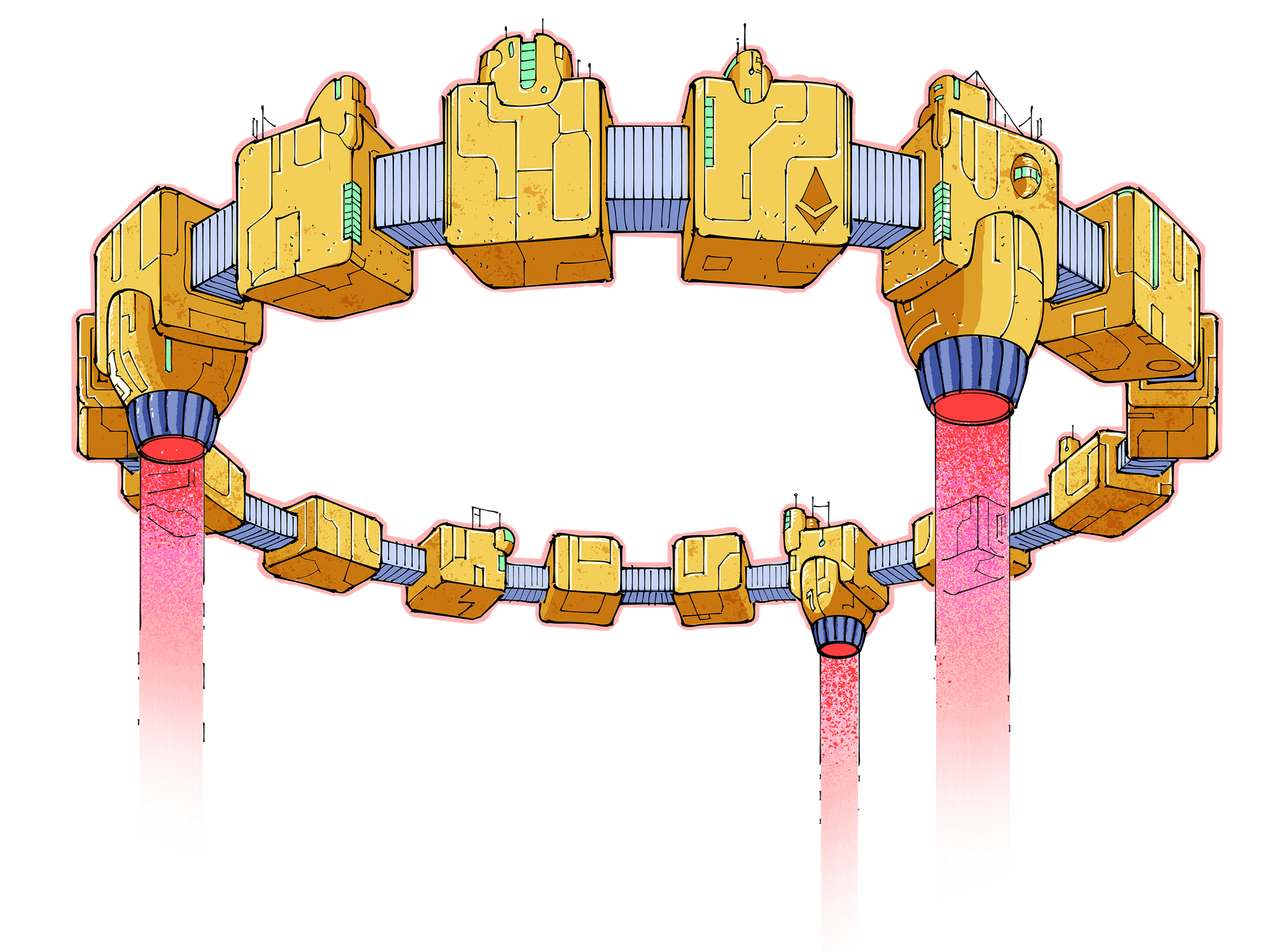The Ethereum Vision
A digital future on a global scale
Grow Ethereum until it's powerful enough to help all of humanity.

The need for upgrades
The Ethereum protocol that launched in 2015 has had incredible success. But the Ethereum community always expected that a few key upgrades would be necessary to unlock Ethereum's full potential.
High demand is driving up transaction fees that make Ethereum expensive for the average user. The disk space needed to run an Ethereum client is growing at a fast rate.
Ethereum has a set of upgrades that address these problems and more. This set of upgrades was originally called 'Serenity' and 'Eth2,' and they've been an active area of research and development since 2014.
- View a 2022 blog post: The Hitchhikers Guide to Ethereum
- View a 2021 blog post on the Ethereum Protocol Updates
- View a 2021 blog post on the Ethereum roadmap evolution
- View a 2015 blog post discussing 'Serenity'
- View a 2014 blog post detailing proof of stake
Now that the technology is ready, these upgrades will re-architect Ethereum to make it more scalable, secure, and sustainable - to make life better for existing users and entice new ones. All while preserving Ethereum's core value of decentralization.
This means there's no on-switch for scalability. Improvements will ship incrementally over time.
Today's problems
Clogged network
Ethereum needs to reduce network congestion and improve speeds to better service a global user base.
Disk space
Running a node is getting harder as the network grows. This will only get harder with efforts to scale the network.
The challenge of decentralized scaling
A naive way to solve Ethereum's problems would be to make it more centralized. But decentralization is too important. It's decentralization that gives Ethereum neutrality, censorship resistance, openness, data ownership and near-unbreakable security.
Ethereum's vision is to be more scalable and secure, but also to remain decentralized. Achieving these 3 qualities is a problem known as the scalability trilemma.
Ethereum upgrades aim to solve the trilemma but there are significant challenges.
Tap the circles below to better understand the problems of decentralized scaling:
Understanding the Ethereum vision
Scalability
Ethereum needs to be able to handle more transactions per second without increasing the size of the nodes in the network. Nodes are vital network participants who store and run the blockchain. Increasing node size isn't practical because only those with powerful and expensive computers could do it. To scale, Ethereum needs more transactions per second, coupled with more nodes. More nodes means more security.
Layer 2 rollups scale Ethereum by moving transactions offchain and only posting summary data to Ethereum. This batching increases Ethereum's throughput while drastically reducing costs for users.
Rollups need low-cost storage on layer 1 to make transactions as cheap as possible for users. This will be provided in the form of blobs attached to Ethereum blocks. Eventually, many blobs will be attached to Ethereum blocks, providing cheap storage for many rollups. More on Danksharding
Security
The planned upgrades improve Ethereum's security against coordinated attacks.
In proof-of-stake additional security comes from greater crypto-economic disincentives against attack. This is because, in proof-of-stake, the validators who secure the network must stake significant amounts of ETH into the protocol. If they try and attack the network, the protocol can automatically destroy their ETH. More on proof of stake
However, it is also important that upgrades that protect validators against denial-of-service attacks, enhance their anonymity, and separate block building and block propagation are implemented soon. These upgrades protect individual validators and the network as a whole against liveness attacks and censorship. More on proof-of-stake
Staking also means you don't need to invest in elite hardware to participate directly in consensus. This should encourage more people to become a validator, increasing the network's decentralization and decreasing the attack surface area.
You can become a validator by staking your ETH. More on nodes
Stake ETHSustainability
Ethereum is a green blockchain with strong crypto-economic security.
Ethereum is now a green blockchain. The energy consumption was reduced by ~99.95% when proof-of-work was swapped for proof-of-stake. More on mining
Ethereum is now secured via staking, not computing power. More on staking
This sustainability boost also brings security benefits - staked ether makes it much more expensive to attack the chain than under proof-of-work, but less expensive to secure it as less new ETH has to be issued to pay validators than miners.
The move to proof-of-stake made Ethereum greener and more secure. It is a low-carbon platform for building apps and organizations.
More on The Merge